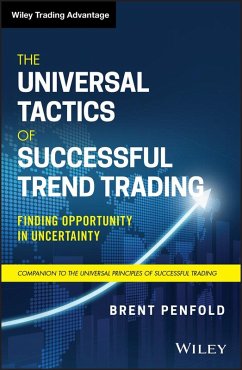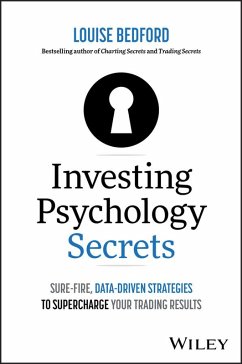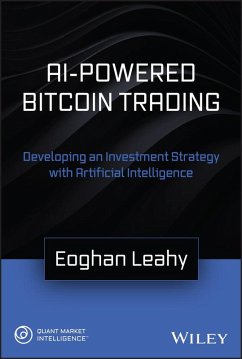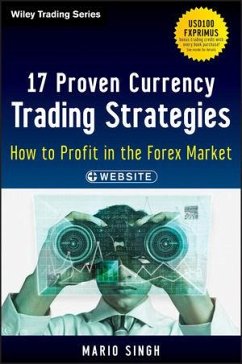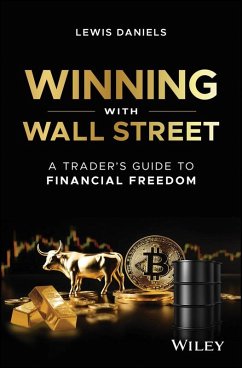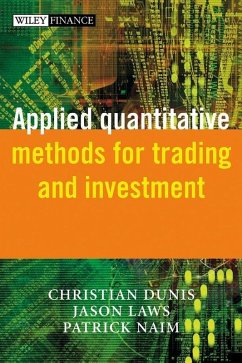
Hands-On AI Trading with Python, QuantConnect, and AWS (eBook, PDF)
Versandkostenfrei!
Sofort per Download lieferbar
35,99 €
inkl. MwSt.
Weitere Ausgaben:

PAYBACK Punkte
0 °P sammeln!
Master the art of AI-driven algorithmic trading strategies through hands-on examples, in-depth insights, and step-by-step guidanceHands-On AI Trading with Python, QuantConnect, and AWS explores real-world applications of AI technologies in algorithmic trading. It provides practical examples with complete code, allowing readers to understand and expand their AI toolbelt.Unlike other books, this one focuses on designing actual trading strategies rather than setting up backtesting infrastructure. It utilizes QuantConnect, providing access to key market data from Algoseek and others. Examples are ...
Master the art of AI-driven algorithmic trading strategies through hands-on examples, in-depth insights, and step-by-step guidance
Hands-On AI Trading with Python, QuantConnect, and AWS explores real-world applications of AI technologies in algorithmic trading. It provides practical examples with complete code, allowing readers to understand and expand their AI toolbelt.
Unlike other books, this one focuses on designing actual trading strategies rather than setting up backtesting infrastructure. It utilizes QuantConnect, providing access to key market data from Algoseek and others. Examples are available on the book's GitHub repository, written in Python, and include performance tearsheets or research Jupyter notebooks.
The book starts with an overview of financial trading and QuantConnect's platform, organized by AI technology used:
Written by domain experts, including Jiri Pik, Ernest Chan, Philip Sun, Vivek Singh, and Jared Broad, this book is essential for hedge fund professionals, traders, asset managers, and finance students. Integrate AI into your next algorithmic trading strategy with Hands-On AI Trading with Python, QuantConnect, and AWS.
Hands-On AI Trading with Python, QuantConnect, and AWS explores real-world applications of AI technologies in algorithmic trading. It provides practical examples with complete code, allowing readers to understand and expand their AI toolbelt.
Unlike other books, this one focuses on designing actual trading strategies rather than setting up backtesting infrastructure. It utilizes QuantConnect, providing access to key market data from Algoseek and others. Examples are available on the book's GitHub repository, written in Python, and include performance tearsheets or research Jupyter notebooks.
The book starts with an overview of financial trading and QuantConnect's platform, organized by AI technology used:
- Examples include constructing portfolios with regression models, predicting dividend yields, and safeguarding against market volatility using machine learning packages like SKLearn and MLFinLab.
- Use principal component analysis to reduce model features, identify pairs for trading, and run statistical arbitrage with packages like LightGBM.
- Predict market volatility regimes and allocate funds accordingly.
- Predict daily returns of tech stocks using classifiers.
- Forecast Forex pairs' future prices using Support Vector Machines and wavelets.
- Predict trading day momentum or reversion risk using TensorFlow and temporal CNNs.
- Apply large language models (LLMs) for stock research analysis, including prompt engineering and building RAG applications.
- Perform sentiment analysis on real-time news feeds and train time-series forecasting models for portfolio optimization.
- Better Hedging by Reinforcement Learning and AI: Implement reinforcement learning models for hedging options and derivatives with PyTorch.
- AI for Risk Management and Optimization: Use corrective AI and conditional portfolio optimization techniques for risk management and capital allocation.
Written by domain experts, including Jiri Pik, Ernest Chan, Philip Sun, Vivek Singh, and Jared Broad, this book is essential for hedge fund professionals, traders, asset managers, and finance students. Integrate AI into your next algorithmic trading strategy with Hands-On AI Trading with Python, QuantConnect, and AWS.
Dieser Download kann aus rechtlichen Gründen nur mit Rechnungsadresse in D ausgeliefert werden.







